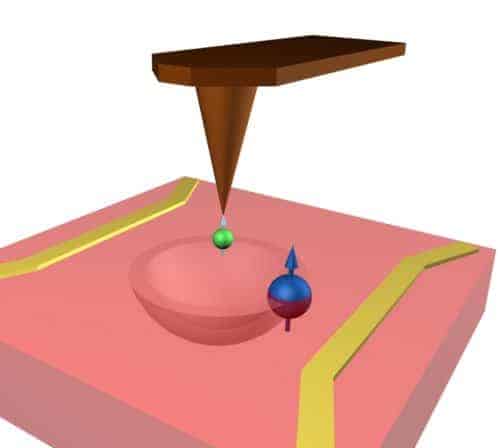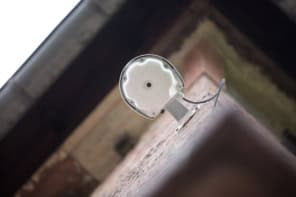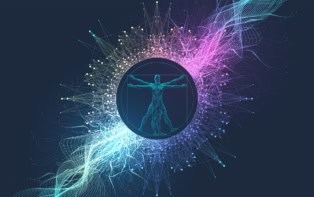
Two independent teams of physicists, one in the US and the other in Germany, have measured magnetic fields on the nanoscale at room temperature for the first time. Both techniques rely on exploiting “nitrogen-vacancy” defects in diamond and can sense the magnetic signals from individual electrons and atomic nuclei placed nearby. Being able to detect such tiny magnetic fields under ambient conditions opens the way to applications in biology but also in materials science, spintronics and quantum information.
The new techniques are based on nuclear magnetic resonance (NMR) and magnetic resonance imaging (MRI) — methods routinely used to image inside the human body. NMR and MRI work by scanning the magnetic activity of billions of nuclear spins but because such a large number of spins are required, conventional NMR cannot be used to study extremely small features.
Now, Mikhail Lukin of Harvard University and colleagues and Fedor Jelezko of the University of Stuttgart and co-workers have developed a new approach that exploits a single spin associated with a special “flaw” in diamond – called a nitrogen-vacancy centre — to detect magnetic fields on the nanoscale (Nature 455 644 and Nature 455 648).
The single spin acts as a very sensitive magnetic probe that can be positioned to within a few nanometres. For example, it can be placed on the tip of a scanning probe microscope to pick up signals generated by the spin of an electron or an atomic nucleus placed nearby.
‘Feeling’the presence
The probe spin can “feel” the presence of any magnetic fields created by nearby electrons or nuclei, which cause a shift in its electron spin resonance (EPR) frequency. This shift can then be detected, for instance, by monitoring the spin resonance transition with a microwave field and tracking the change in photoluminescence of the probe spin.
Moreover, owing to the ultralong relaxation times of nitrogen-vacancy electron spins (on the order of a millisecond) in diamond, single spin MRI is possible under ambient conditions. Until now, cryogenic temperatures were needed to stabilize spins in other materials.
Together [these two results] really jump-start a new research field Mikhail Lukin, Harvard University
Lukin’s team managed to detect 3 nT magnetic fields at kilohertz frequencies using its technique. These fields are equivalent to those present about 100 nm from a single electron or 10 nm from a single proton. Meanwhile, Jelezko’s group succeeded in using such a magnetometer to obtain the first scanned images of a sample. For example, the researchers were able to locate the position of the nitrogen-vacancy centre itself with a spatial resolution of just 5 nm.
Taking MRI to the nanoscale
One important application for a nitrogen-vacancy probe is in nanoscale-resolution MRI. Indeed, MRI with single-spin sensitivity brings a tremendous improvement in spatial resolution down to the nanometre or even Angstrom level, explains Jelezko. “Hence, when a single nanocrystal containing a nitrogen-vacancy defect is attached to biomolecules, it can be used to investigate the structure of a single protein or DNA molecules,” he told physicsworld.com.
Other applications for the sensor include detecting individual electron and nuclear spins in complex biological molecules and as a “quantum magnetic head” for addressing and readout of quantum bits of information encoded in an electron or nuclear spin memory, says Harvard team member Ronald Walsworth.
The Stuttgart and Harvard results are very much complementary, adds Lukin. “Together they really jump-start a new research field.”



